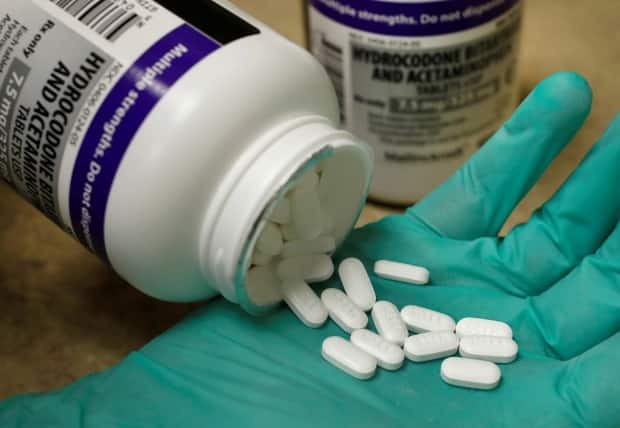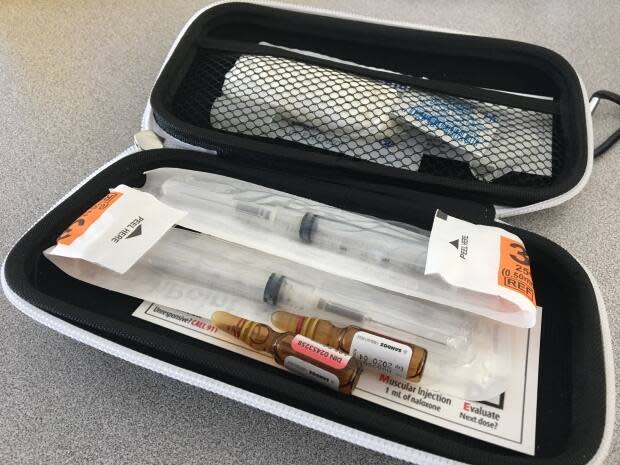Advocates call for improvements to N.S. program that warns of dangerous, illegal drugs

Advocates are calling for changes to a Nova Scotia program that warns the public of new and dangerous street drugs, saying the alerts about potential overdose risks don't reach the most vulnerable people quickly enough.
They say the consequences of an ineffective warning system can be fatal.
"Anybody who's not directly connected to an organization or watching social media often doesn't get those alerts," said Amanda Dodsworth, a youth outreach worker with the Peer Outreach Support Services and Education Project.
"So if you have really vulnerable populations who are not connected to community resources, they might be missing information that could keep them safe."
Public alerts warn of dangerous drugs
According to the province, 57 people died from opioid overdoses in 2019, and that number is predicted to increase over time.
The province's drug harms alert program was created by the provincial health authority in November 2020 as part of a larger strategy aimed at counteracting the opioid crisis.
Nova Scotia Health receives reports of contaminated or poisoned drugs from law enforcement or community organizations. Alerts are then sent by email to a list of community-based organizations in the province that disseminate the information.
Nova Scotia Health also sends out a public alert on Twitter and Facebook, but people on the alert distribution list say this can be hours or days later.
Confusion after 2 alerts sent at same time
On July 15, an alert was sent out warning of an unknown substance circulating in the Halifax area that had caused multiple overdoses and two deaths. Later that month, Nova Scotia Health sent out two more alerts at the same time, one identifying the drug from July 15 as isotonitazene, a synthetic opioid.
The second, unrelated alert referenced a different drug — etizolam — seized in the Halifax area on July 16. Etizolam is a benzodiazepine and, unlike isotonitazene, does not respond to life-saving Naloxone.
Both alerts were scant on details and resulted in confusion among some news outlets and people on social media, who incorrectly identified etizoman as the drug causing the overdoses and fatalities.
Cheryl MacIsaac, a program co-ordinator at Adsum for Women and Children, said though her organization deals mainly with housing, it uses harm reduction practices daily and is often faced with drug overdoses.
She said sharing information with those who need it most can be difficult if people are transient, use drugs in private dwellings, or are not involved with any harm reduction organizations.
"Who the alerts are received by or how the information is disseminated is problematic," MacIsaac said. "It's mostly going to people behind desks, and not [drug] users."
Dodsworth said more peer outreach workers are needed to reach vulnerable populations.
"Funnelling funding into street-level organizations that already have built trusted relationships with populations that are often hard to reach and allowing them the ability to grow their organization … would be ideal," Dodsworth said.
'Innovative' harm reduction
She and MacIsaac point to Vancouver as the best example of harm reduction practices and communication about drug harms.
Vancouver uses a system called the Real-time Drug Alert and Response (RADAR) project, which began in 2017 and was among the first of its kind in the country.
Elizabeth Holliday, the director of Vancouver Coastal Health's emergency response and harm reduction program, said anyone in the community can sign up to receive text message alerts about drug harms, and can also submit anonymous tips about overdose risks via text or web.
People can send photos of tainted drugs and details like what it was sold as and where it was purchased. If a trend is identified, a text alert is sent out.

Holliday said focus groups of people who use drugs have reported that the RADAR system is effective.
"[They said] it did alter their decisions about how they were using and then supported them to make changes to their practices and maybe access overdose prevention services," she said.
'An issue for everybody'
Dodsworth said it's a strategy that should be used in Nova Scotia.
She said though people living rough may not have a phone or access to the internet, many of them do, and can pass the information on to others within their networks.
Dodsworth says text alerts would also benefit young people and students, who are high-risk users and are often overlooked when it comes to drug policy.
"This isn't an issue just for street-entrenched or homeless folks or chronic users, this is really an issue for everybody," she said.
Dodsworth and MacIsaac said Nova Scotia's alert system is a step in the right direction, but that it must exist in conjunction with other harm reduction methods like a safe supply, drug checking, and decriminalization.
Government response
Nova Scotia Health said in an email that it welcomes suggestions on how to improve services and noted it has a regular working group called the harm reduction implementation team, which serves as a platform to discuss improvements.
It said it's in the planning stages of a formal evaluation of the drug harms alert program, but ultimately, "decisions around policy direction and funding for enhancements to harm reduction services rest with the Department of Health and Wellness."
Premier-designate Tim Houston said in his election platform that his government will create a Ministry of Addictions and Mental Health.
MORE TOP STORIES

